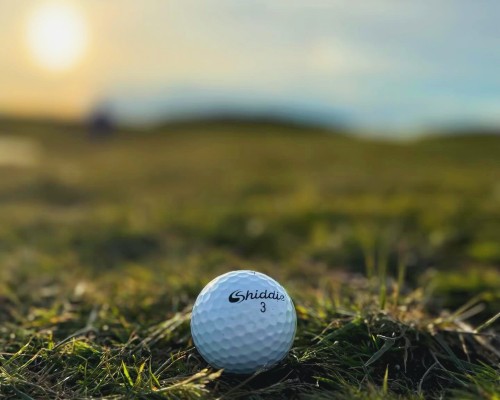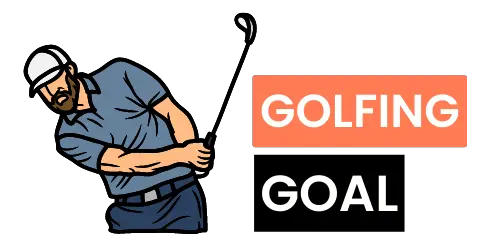
Struggling to spot your golf ball on the course? Yellow and orange Golf balls are proven to be the easiest to see, enhancing your game by reducing search time and boosting focus. In this article, we’ll explore why these colors stand out and how they can improve your play.
Learn the science behind visibility and get practical tips for choosing the right ball for any condition. Dive in to elevate your game and keep your eyes on the prize!
Understanding Golf Ball Visibility
1. The Importance of Golf Ball Color in Visibility
Golf ball color affects visibility greatly. Bright colors like yellow and orange are easier to spot. Yellow is the most popular due to its high visibility.
Orange is effective too, especially in the rough and during winter).
Studies show colored balls improve tracking. For example, an Irish South East Technological University (SETU) study found that orange balls can improve a golfer’s round by up to two strokes. This is due to better visibility and easier location on the course.
For golfers struggling with their game, understanding these benefits can be as crucial as finding out why you might be suddenly terrible at golf.
2. How Human Eyes Perceive Different Colors on the Golf Course?
Human eyes perceive colors based on light and contrast. Bright colors stand out more.
Yellow and orange offer the best contrast against green grass and blue sky. White is the traditional color but can blend with clouds and sunlight.
In low light, bright colors help. Orange, yellow, and even pink are beneficial during cloudy days or twilight.
The human brain processes bright colors faster, making them easier to track in flight and on the ground.
Choosing the right color can reduce search time. This boosts confidence and can improve scores.
Golfers should experiment with different colors to find the best fit for their vision and playing conditions.
Comparing High-Visibility Golf Ball Colors

1. Why Yellow Golf Balls Stand Out
Yellow golf balls are highly visible. They stand out against green grass and blue sky. Yellow is also easy to spot in different light conditions.
Studies show that yellow golf balls are 50% easier to track than white balls. Many top brands offer yellow balls due to their popularity and visibility.
2. The Benefits of Orange Golf Balls
Orange golf balls are another top choice. They perform well in the rough and fall foliage. Orange is bright and contrasts well with green grass.
They are also effective in winter, standing out against snow and overcast skies.
3. Pink Golf Balls: An Underrated Option
Pink golf balls are less common but very effective. They are bright and visible in various conditions. Pink stands out well against green grass and blue sky.
These balls are also a great choice for those who want a unique look on the course. Despite their visibility, pink golf balls are often overlooked in favor of yellow and orange.
4. Other Colors: White, Blue, Green, and Red
White golf balls are traditional but can blend with clouds and sunlight. Blue balls are less visible against the sky and grass. Green balls blend with the course, making them hard to spot.
Red balls are better in overcast or snowy conditions but not as effective as yellow or orange
Factors Influencing Golf Ball Visibility
1. The Role of Ball Surface Texture and Glossiness
Surface texture and glossiness impact golf ball visibility. Matte finish balls reduce glare, making them easier to spot in bright light.
Glossy balls can reflect sunlight, causing glare and making them harder to see. Matte textures are popular for high-visibility colors like yellow and orange.
These finishes help maintain visibility even under direct sunlight.
2. How Background Contrast Affects Visibility

Background contrast is crucial. Bright colors like yellow and orange stand out against green grass and blue skies. High-contrast colors improve tracking and locating the ball.
White balls, while traditional, can blend with clouds or light sand. Orange balls are particularly effective in autumn, contrasting well with fallen leaves.
3. Impact of Course Conditions on Color Choice
Course conditions dictate color choice. On sunny days, bright colors like yellow are optimal. In cloudy or twilight conditions, orange or pink balls perform better.
Winter golf requires high-visibility colors to contrast with snow. Orange and yellow are preferred in these conditions. Adapting to course conditions enhances visibility and improves play.
Advanced Tips for Enhancing Visibility
1. Utilizing Two-Tone and Patterned Golf Balls
Two-tone and patterned golf balls improve visibility. These designs make the ball easier to track in flight. The contrast between colors helps your eyes follow the ball’s path.
Volvik offers popular two-tone balls known for high visibility. Patterned balls like Callaway’s Truvis also enhance tracking, especially in varied light conditions.
Using these balls can reduce lost balls and speed up play. They are especially helpful in rough or shaded areas. The unique designs also add a touch of style to your game.
2. Incorporating Visibility Strategies into Your Game
Adopting visibility strategies can enhance your game. Choose high-visibility balls based on conditions. For example, use yellow or orange balls on sunny days.

Switch to pink or green balls in overcast weather. Always carry a mix of colors to adapt to changing conditions.
Mark your ball with bright, unique patterns. This helps in identifying your ball quickly.
Practicing with different colors and patterns can also improve your ability to track the ball in various conditions.
Final Thoughts!
A unique aspect of golf ball visibility is the use of two-tone and patterned balls, which enhance tracking through contrast.
Yellow and orange are the best for visibility due to their high contrast with green grass and blue sky.
To improve your game, consider experimenting with different colors and textures based on course conditions.

Callum is a former professional golfer with over 20 years of experience on the course. He has won numerous tournaments and has a wealth of knowledge about the sport. Callum is our Lead Swing Coach and provides tips and advice on everything from swing mechanics to mental preparation for tournaments. Join Our Team!
